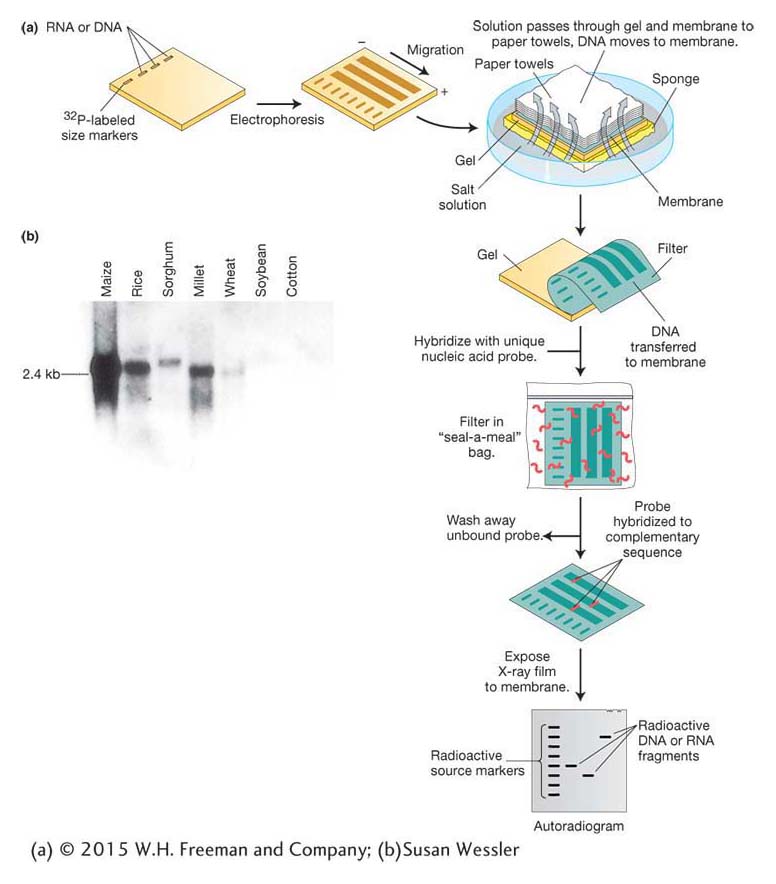Finding specific nucleic acids by using gel electrophoresis and blotting

Figure 10-15: In this example, a radioactive probe is used to identify specific nucleic acids separated by gel electrophoresis. (a) RNA or DNA restriction fragments are applied to an agarose gel and undergo electrophoresis. The various fragments migrate at differing rates according to their respective sizes. The gel is placed in buffer and covered by a membrane and a stack of paper towels. The fragments are denatured to single strands so that they can stick to the membrane. They are carried to the membrane by the buffer, which is wicked up by the towels. The membrane is then removed and incubated with a radioactively labeled single- stranded probe that is complementary to the targeted sequence. Unbound probe is washed away, and X- ray film is exposed to the membrane. Because the radioactive probe has hybridized only with its complementary restriction fragments, the film will be exposed only in bands corresponding to those fragments. Comparison of these bands with labeled markers reveals the number and size of the fragments in which the targeted sequences are found. This procedure is termed Southern blotting when DNA is transferred to the membrane and Northern blotting when RNA is transferred. (b) An actual Northern blot, run with RNA isolated from the seeds of various plants. A single RNA probe is used to identify the presence of a single locus. The results show that maize is more closely related to rice, sorghum, and millet than it is to soybean or cotton.
[(b) Susan Wessler.]
[Leave] [Close]